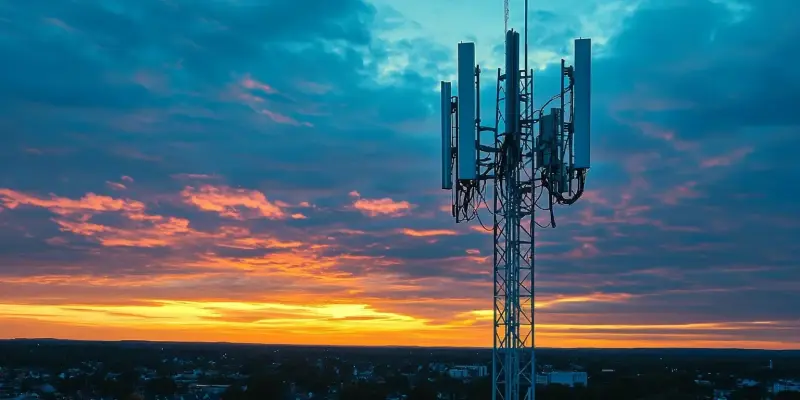In a significant advancement for wireless communication, Verizon has recently conducted a groundbreaking trial that achieved download speeds of 5.5 Gbps. Utilizing carrier aggregation to combine multiple channels of both FDD and TDD spectrum bands, this technological feat aims to significantly increase the efficiency of data transmission over wireless networks. Specifically, six channels of sub-6 GHz spectrum were aggregated to reach this impressive speed, which equates to downloading 266 Taylor Swift albums in a minute or streaming 3,056 Hulu episodes per hour.
Combining a total of 350 MHz of PCS, 850 MHz, AWS, CBRS, and C-band spectrum within a lab setting, Verizon managed this trial using Samsung’s virtualized Radio Access Network (vRAN) solution along with MediaTek’s connectivity platform featuring 6CC technology. The 5G data was tested via Samsung’s 5G Standalone core, illustrating that next-generation devices using this advanced technology could enable new use cases and drive innovation in mobile connectivity.
Verizon emphasized the flexibility brought by virtualization in the RAN, which allows for better management of network resources to accommodate varying customer needs, thereby enabling higher throughput speeds. Adam Koeppe, Senior Vice President of Technology Planning at Verizon, highlighted the company’s dedication to offering cutting-edge solutions designed to help customers succeed in an increasingly dynamic world. Similarly, Alok Shah, Vice President of Strategy, Business Development, and Marketing at Samsung Electronics America, expressed enthusiasm for this achievement, noting the enhanced scalability and flexibility introduced by 5G Standalone technology.
The necessity for mobile network enhancement is growing, as underscored by GSMA Intelligence projections which estimate that mobile data traffic will exceed 5,400 exabytes by 2030. This surge in data usage presents an industry-wide challenge of generating returns on substantial investments required to support such growth.
Moreover, Verizon has recently launched Enhanced Video Calling for its customers, aimed at improving video calling experiences on platforms like FaceTime, WhatsApp, and Zoom through the use of network slicing. This new service is initially available to users with iPhone 14 or newer handsets on the Unlimited Ultimate or Business Unlimited Pro 5G plans, and only in select 5G Ultra Wideband coverage areas.
Summing up Verizon’s efforts, it is evident that the company is leading the way in network technology to meet rising data demands and deliver innovative solutions. Against a backdrop of increasing global mobile data traffic, this presents both opportunities and challenges for network providers. Verizon’s trial not only showcases significant technological advancements but also promises increased performance and future possibilities for consumer devices.

